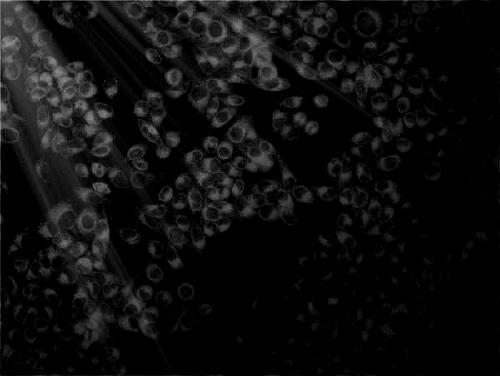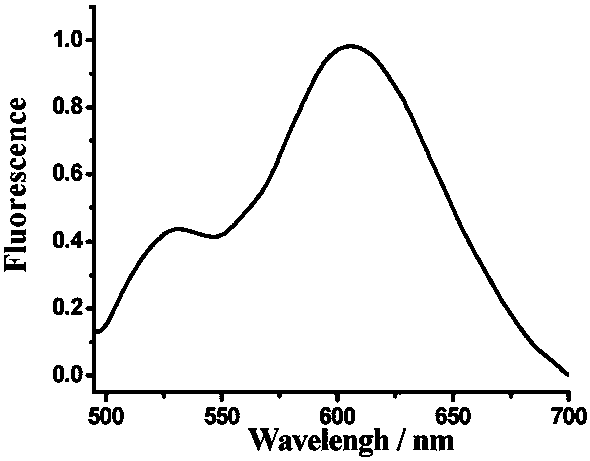Application of composite fluorescent probe in imaging detection of live tumor cells
A composite fluorescence and cell imaging technology, applied in the direction of fluorescence/phosphorescence, luminescent materials, measuring devices, etc., can solve the problems of application limitations, high biological toxicity of quantum dots, etc., and achieve low biological toxicity, good cell membrane permeability, and good water solubility sexual effect
- Summary
- Abstract
- Description
- Claims
- Application Information
AI Technical Summary
Problems solved by technology
Method used
Image
Examples
Embodiment
[0010] The synthetic route of 3-(4-amino)-butyric acid-acenaphthopyrazine-8,9-dicarbonitrile:
[0011]
[0012] Synthetic steps:
[0013] 1. Add 200mg of 5-bromoacenaphthenequinone and 125mg of diaminomaleonitrile into a 50mL two-necked flask, then add 6mL of glacial acetic acid, stir and heat under reflux at 120°C for 2h, cool in an ice-water bath, filter, dry, and column layer Analysis and separation gave bright yellow 3-bromo-acenaphthopyrazine-8,9-dicarbonitrile;
[0014] 2. Take 100mg of 3-bromo-acenaphthopyrazine-8,9-dinitrile and 40mg of 4-aminobutyric acid in a 50mL round bottom flask, add 8mL of dimethylsulfoxide, heat and reflux at 110°C for 1h, the reaction forms The red mixture can be distilled under reduced pressure to obtain 3-(4-amino)-butyric acid-acenaphthopyrazine-8,9-dicarbonitrile;
[0015] 3. Add 6mg of 3-(4-amino)-butyric acid-acenaphthopyrazine-8,9-dicarbonitrile into a 50mL two-necked flask, then add 25mL of dimethylsulfoxide and stir to dissolve, ...
PUM
 Login to View More
Login to View More Abstract
Description
Claims
Application Information
 Login to View More
Login to View More - R&D
- Intellectual Property
- Life Sciences
- Materials
- Tech Scout
- Unparalleled Data Quality
- Higher Quality Content
- 60% Fewer Hallucinations
Browse by: Latest US Patents, China's latest patents, Technical Efficacy Thesaurus, Application Domain, Technology Topic, Popular Technical Reports.
© 2025 PatSnap. All rights reserved.Legal|Privacy policy|Modern Slavery Act Transparency Statement|Sitemap|About US| Contact US: help@patsnap.com



